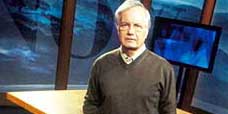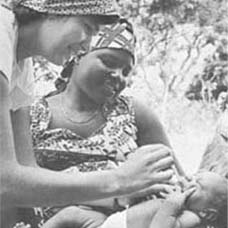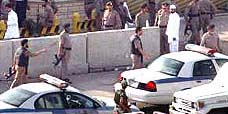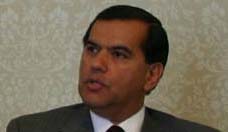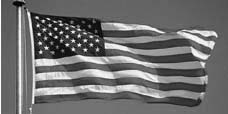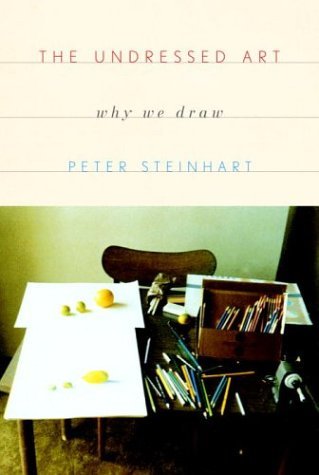
The Undressed Art : Why We Draw by Kenya RPCV Peter Steinhart
The Undressed Art : Why We Draw
by PETER STEINHART
Editorial Reviews
From Publishers Weekly
With the triumph of photography and the retreat of representation from "serious" visual art, the place of drawing as a central and necessary human activity might appear to be under some threat. Yet naturalist Steinhart's lively and gently polemical book shows it to be positively thriving, most passionately (and unexpectedly) in "drawing groups" that meet all over the country to sketch models and discuss technique. Steinhart (The Company of Wolves) is himself the enthusiastic member of such a group, and details of their rearguard defense of drawing traditions are the affectionately rendered center of the book. Moving from his own experiences to art history, science and the lives of the artists and models with whom he comes in contact, Steinhart examines this resurgence not only as an exercise in cultural self-expression but a collective response to a fundamental human need. Along the way, he gives quick but informative sketches of the world of children's drawing, the physiology of facial recognition and the evolution of photography. But the book's true milieu is the studio, and its core subject the complex relationships between hand, brain, eye and subject in the drawn depiction of the human figure. The fascinating life of the figure model Florence Allen (who not only posed over a period of many years for everyone from Diego Rivera to Richard Diebenkorn, but helped organize her colleagues into a professional guild) shows a side of the art world rarely explored with such sympathy and depth. And if Steinhart partakes a little of the "Us vs. Them" opposition to the contemporary art world common among his peers, he doesn't make a big deal out of it. For him, a drawing bound for the fridge door is taken as seriously as a painting in the Prado. 31 illus.
Copyright © Reed Business Information, a division of Reed Elsevier Inc. All rights reserved.
From The Washington Post's Book World/washingtonpost.com
Why does the human animal, alone of all creation, have the ability -- and the primal need -- to represent the world, as filtered through the senses and the intellect and the soul, in the form of drawings? Out of such a simple yet fundamental question, Peter Steinhart conjures a fascinating meditation that spans such fields as religion, psychology, Darwinism, feminism, sociology, neuroscience and philosophy. In The Undressed Art, Steinhart has created one of those sui generis works such as Robert Pirsig's Zen and the Art of Motorcycle Maintenance. While its scope might not be as large as Pirsig's, Steinhart's book still speaks to many of the same issues of community, mindfulness, personal liberation and the dynamic interplay between past and present.
A naturalist by trade, Steinhart brings a keen scientific manner to the main question of "why we draw." He cites the latest theories from consciousness studies, such as those found in the work of Steven Pinker. He also delves into the famous left-brain, right-brain theory of artistic creativity, discussed in books such as Betty Edwards's classic Drawing on the Right Side of the Brain. He reviews anthropological and zoological evidence on the subject and examines the neurological development of children, elucidating the standard stages of artistic capability. Steinhart also looks at ways in which our culture respects or devalues the act of drawing.
All of this is couched in pellucid prose aimed at the general reader. Discussing the hardwiring that underlies facial recognition among our species, Steinhart writes, "Our intense awareness of our own faces and postures is a quality older than humanity . . . Humans will look for responses to their own faces or bodies in the face of another, and thus seek to get others to display respect or fear or amusement in their facial expressions." There you have the quintessence of occupations as diverse as diplomat, politician, entertainer and hooker distilled into a few sentences. For Steinhart, the rewards of drawing are threefold: understanding, self-expression and communication. But beyond these somewhat obvious answers, he evokes a kind of Zen satori space that the artist enters, before concluding, "Whatever it is that gives an individual the impulse to draw seriously is very much a mystery." He nonetheless affirms that "Drawing . . . is a kind of exploration, a search for our own inner nature, our origins, our souls."
Steinhart contrasts the meditative inner journey of drawing with the typical shallow amusements and flashy preoccupations of modern culture, building a strong case for drawing as a therapeutic counterweight to the thoughtless vices of our time.
A dedicated student of drawing (an engaging self-portrait in pencil on the dust-jacket substitutes for the usual author photo), Steinhart guides us expertly through the actual mechanics of learning how to do it. He has a facility for conveying in words the interaction of muscles and eyes and mind that go into capturing on paper whatever presents itself to the artistic gaze. His description of his own struggles with artist's block is particularly affecting.
Steinhart dips in and out of journalistic mode, chronicling the loose network of drawing groups across the country. With his focus on drawing from live, nude models, he digs into the lost history of such heroic models as Florence Allen, who hung with the Beats, posed for Rothko and Diebenkorn, and founded the Bay Area Models' Guild. This portion of the book is fully as intriguing as the more theoretical parts.
Steinhart also deals frankly and fruitfully with the sexual dynamics between artist and model. With supporting testimony from many artists of his acquaintance, he argues that the sexual charge is transient and secondary to the real connections that link perceived and perceiver.
Steinhart's book raises a couple of issues that it fails to deal with. There's no real examination of non-Western modes of drawing, no sense of how different cultures have regarded it. For someone attempting to make a universal case about the nature of humanity, this deficit is notable. On a related note, it's amazing that a person of Steinhart's sensitivity uses the phrase "flesh-colored" twice to describe a certain shade of crayon. Really? Whose flesh? Given Steinhart's emphasis on the division between word-types and image-types, I was also surprised not to see at least a small discussion of writers known for their drawings, such as Henry Miller, Vladimir Nabokov and Charles Bukowski. Finally, in his analysis of the historical battle between figurative and abstract art, Steinhart misses a chance to cite how artist Robert Williams and his Juxtapoz magazine have sought to restore the representational mode to prominence. But the overall effect of this engaged and engaging book is to make its lucky readers feel that only by picking up a pencil and drawing can we tap into "a repository of wisdom and energy, purpose and comfort" that is larger than all of us.
Reviewed by Paul Di Filippo
Copyright 2004, The Washington Post Co. All Rights Reserved.
